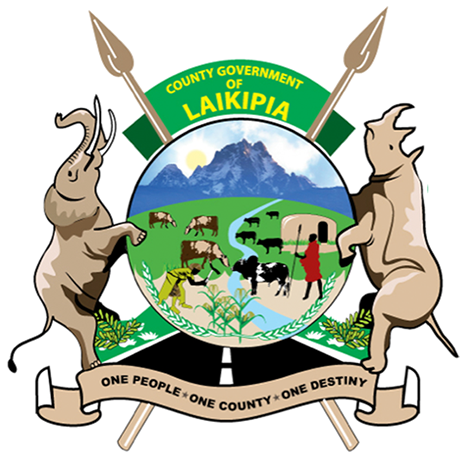I Want NTRH To Have A Public Private Patients Model
Each day Nanyuki Teaching and Referral Hospital (NTRH) handles an average of 800 patients. This is a number that baffles health experts since they reflect those of well-resourced higher-level health facilities within the region. Leading medical insurance underwriters like Britam, Jubilee, Kenya Alliance, NHIF, and Sanlam have also accredited NTRH as their service provider. Our Staff Writer Nahashon Maina talked to NTRH CEO Dr. Timothy Panga on what is driving this customer flow, as well as the strategy in place in the medium term. Here is the interview:
How is your typical day as the person at the helm of a busy organization like NTRH?
I am a 24 hours person. My day involves checking the workload of the previous day, revenue issues, checking whether the hospital system is working, whether there are any incidences in the books that need my attention, staff welfare issues, and staff requests.
I also liaise with various departments and address stakeholders issues that may arise during the day.
I am usually at work when called upon by the duty manager for any issue at the hospital may be emergency, supervision that needs my intervention, someone requiring certain care that we might not be able to provide, or one we can address but requires a certain member of the staff.
NTRH attends to over 50,000 patients every quarter. What does this mean to you?
Its a vote of confidence in our service delivery. We are serving the largest section of the community. Most of the community members depend on us for services and we provide those services at all times going by a large number of satisfied customers. NTRH has the goodwill of the people. Its the first point of call for many people and they keep coming in big numbers. Few other hospitals in this region have such numbers. It means that NTRH is important to the community regardless of what is said in the public. We continue to improve our services.
How many staff do you have and how do you ensure team cohesion?
We have 350 staff members. These include seven specialists, 24 medical officers, seven pharmacists, four pharmacy technicians, three nutritionists, two dentists, 24 clinical officers, 160 nurses, among other highly qualified health professionals and support staff. Each member of the team in the hospital comes already with their specialized skills area. Thats the best way to achieve staff harmony. Making sure they have all they need for service delivery and forming functional clinic and hospital governance committees for different areas.
We also make sure team members grow together, so we are very keen on health promotion and making sure that the staff get promoted properly as it is a big component of our pride and being part of NTRH.
Which services does NTRH offer?
Patients come for various reasons:
- Specialist clinics that they have booked for
- Checkups
- Maternal Child Services
- Pregnant mother who requires antenatal care
- Children coming for child welfare services
- Some for Comprehensive Health Care Clinic
- HIV treatment
- TB and radiology
Its important to note that we are the hospital with a specific radiology equipment called Orthopantomogram (OPG) which is a panoramic scanning dental X-Ray of the upper and lower jaw.
How has the high NHIF enrollment rate impacted on NTRH?
Our NHIF counters are ever busy. Very few of our customers are accessing health care through cash payment. NHIF card is a testimony of what the County Government has done at the demand level. We are the supply side of NHIF services but people who are demanding are patients when they register themselves.
Jubilee insurance is the latest medical insurance firm to accredit your hospital. What does this mean for NTRH?
It is a new area we have entered. It was a big step of faith in our services because most privately-insured patients are discerning, they can often see the stage of preparation that you are in. Many insurances firms like Jubilee, Britam, Kenta Alliance, and Sanlam have agreed to walk with us as we build ourselves into a proper alternative for affordable health care.
You are in the process of leasing medical equipment. How is this going to change service delivery?
We have a new building that requires us to add nearly 120 beds with two functional theatres, maternity, and private wing with adequate patient monitoring and treatment. We have oxygen needs that almost double our current capacity and need to accommodate for future growth. Patients will be more and we dont want to keep on referring them for CT scan and MRI.
Leasing medical equipment is just a way to getting all that we need all at once without the need to pay for them at once. Its a big compliment of our growth. We are currently working on a business plan that affirms leasing is the way to go as it will have immediate benefits in terms of service volumes and even the realization of more revenue.
Where do you see NTRH in the next five years?
A more self-sustaining institution meeting most of the costs including a good portion of permanent staff cost because we will grow the volume of services. I see a hospital that operates on both public-private patients models. A hospital with all diagnostic services, modern MRI, CT scan, and large oxygen generating plant to meet 10 years need.
People first and foremost come to a hospital to be treated but also a very important factor in their comfort. People choose the hospital-based on comfort so we have to bring those two together. You can only go so far with the effectiveness of health services if you do not have adequate comfort for those patients. This means more space, cleanliness, personalized attention, and personal amenities in a room or ward.
(Source: CGL E-Newsletter)
